 |

| Fashion Flowers
For Spring
The New Collection : Still Life |
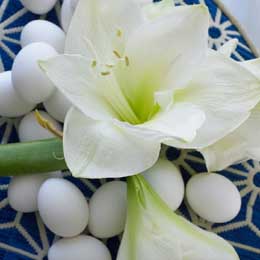 |
< Amaryllis Amaryllis are native
to South and Central America, and the Caribbean. They take their name from the
Greek mythological story of a young girl called Amaryllis who had to draw blood
from her heart on 30 consecutive nights to win the love of a man. Where her blood
fell, a blood-red flower with trumpet shaped blooms grew! Amaryllis are not only
available in red however - breeding has resulted in some wonderful colours including
pink, white, green and bi-coloured varieties and a perfect pure white for winter.
>
click for more info on amaryllis |
| Hyacinth> Hyacinths
are widely available as cut flowers. Just a few stems of this flower can perfume
a whole room. The word "hyacinth" comes from the Greek Huakinthos, a
young man fatally struck at a discus event. From his blood grew a flower which
the god Apollo named after him. First cultivated in Austria in the 1500s, the
bulbs are now grown in Holland and Great Britain. Varieties come in all colours
including pure white, salmon, delicate pink and baby blue. More unusual colours
to look for include dark wine purples, rosy reds, navy, egg-yolk yellows and soft
oranges. > click for more info on hyacinth | 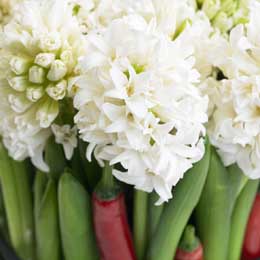 |
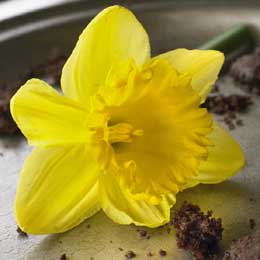 |
< Narcissus Narcissi is the name
of the family to which daffodils belong - so called, accordingly to mythology,
after a Greek youth Narcissus who fell in love with his own reflection is a stream.
He stayed transfixed by the stream and so the Gods changed him into the flower
to save him from death by starvation. The Romans first cultivated the flower,
and it remains one of the most popular and well-known cut flowers today; with
over 25,000 registered varieties of Narcissi. They are mainly cultivated in the
Channel Isles, Isles of Scilly, Great Britain and Holland.
>
click for more info on narcissus |
| Ranunculus>
Ranunculus are little known here in Britain as a cut flower, but are very popular
on the continent. Their botanical name (ran UN kew luss) derives from the latin
for "frog", as the plants like wet ground. They are sometimes called
Persian buttercup - which refers to their native origins in the Middle East. They
are close relatives of this common garden weed, but much more decorative! The
cup-shaped flowers are very full - a mass of tissuey petals - on hairy stems,
with very few small ferny leaves. They come in yellow, red, orange, pink, peach,
white and maroon.
> click for more
info on ranunculus | 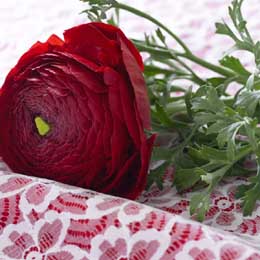 |
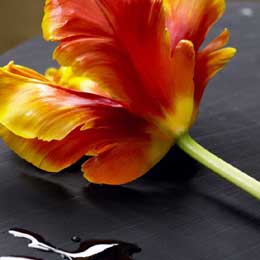 |
< Tulip The name tulip comes from
the Turkish for turban, referring to the shape of the flower bud; although native
to Turkey, tulips are now grown in Holland and the UK, particularly Lincolnshire.
Some of the more exotic forms - such as parrot (ruched and frilly), fringed (with
ice crystal edges), waterlily (layers of petals) and lily (pointed, curly petals)
- look as if they come from a tropical island. Their plain wine-glass shape has
a modern simplicity, and tulips are very popular. In their natural season they
are very reasonably priced flowers, and a perfect emblem of spring for many of
us.
> click for more info on tulip |
| Vanda
orchid > Vanda
is the Hindustani (Urdu) name of the flower. These orchids are native to Australia,
South East Asia and Northern India. They may look
delicate but they are actually very hard wearing. As cut flowers they are becoming
increasingly popular for wedding work. They have
eye-catching markings, intensity of colour and an exotic look that makes them
stand out from the crowd. The purple varieties are more commonly seen as cut flowers
but other colours are now becoming available.
>
click for more info on vanda
orchid | 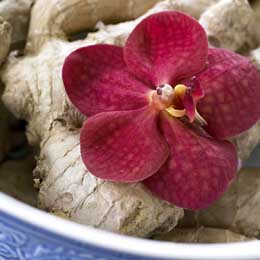 |

back |
|






